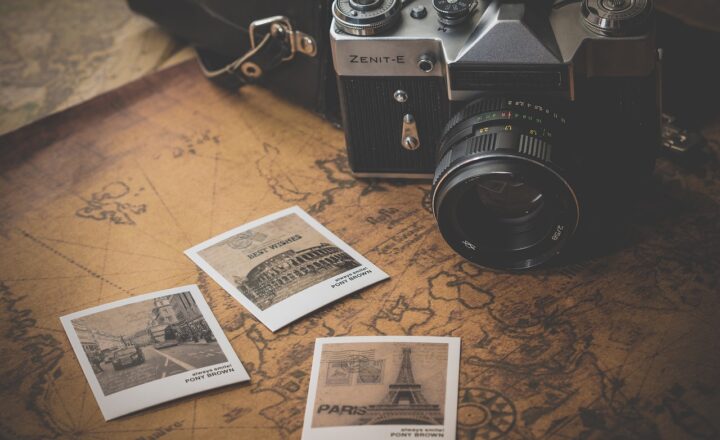
In recent years, there’s been a noticeable shift in travel preferences, with more individuals and families opting for what is known as slow travel instead of quick getaways. This trend is not only redefining the travel experience but also reshaping the tourism industry as a whole. As the world becomes increasingly interconnected, the appeal of immersing oneself in local cultures and environments during extended trips has grown tremendously, prompting a deeper examination into the reasons behind this change.
1. The Essence of Slow Travel
Slow travel is defined by its emphasis on savoring the journey rather than just the destination. Unlike hurried vacations that focus on hitting as many attractions as possible in a limited time frame, slow travel encourages:
- Connection with Local Cultures: Travelers engage more meaningfully with the communities they visit, learning about their traditions, customs, and way of life.
- Sustainability Practices: By spending more time in one place and opting for local accommodations and dining, slow travelers contribute to the local economy and minimize their carbon footprint.
- Mindfulness and Reflection: Slow travel fosters a sense of presence and mindfulness, allowing travelers to reflect on their experiences and build lasting memories rather than simply collecting stamps in a passport.
As travelers become increasingly aware of the impact of rapid tourism, many are drawn to the more enriching and fulfilling experience that slow travel provides.
2. The Drawbacks of Quick Getaways
Quick getaways have their charms—fleeting escapes that offer a break from routine. However, these trips often lead to:
- Superficial Experiences: When planning a quick trip, travelers often set out to see as many sights as possible, which can result in experiencing places in a hasty, superficial manner without really engaging or understanding them.
- Increased Stress Levels: Quick getaways can lead to a frantic pace, characterized by rushed schedules, long days packed with activities, and inevitable stress associated with travel logistics.
- More Tourist Crowds: Popular tourist spots during peak season can become overcrowded, diminishing the joy of visiting those destinations.
The limitations and stresses inherent in quick travel are prompting many to reconsider their approach to leisure experiences and seek a more fulfilling alternative.
3. Connecting with Nature: A Key Factor
One of the cornerstones of slow travel is a focus on nature and the great outdoors. With increased awareness about the need to disconnect from technology, many travelers are opting for serene escapes where time can be spent in nature:
- Mindfulness in Nature: Immersive experiences like hiking, camping, or simply enjoying a scenic view encourage travelers to appreciate their surroundings and unwind from the hustle of modern life.
- Support for Local Conservation: Choosing destinations that prioritize environmental conservation or support eco-tourism aligns with the values of many slow travelers, allowing them to give back to the places they enjoy while exploring responsibly.
Travelers today are more likely to seek itineraries that allow them to spend prolonged periods in natural settings, far away from bustling urban environments.
4. The Digital Nomad Influence
The rise of remote work has fueled the slow travel trend, giving rise to a community of digital nomads who seamlessly blend work and leisure:
- Extended Stays in One Place: Many digital nomads choose to live in a single location for weeks or months, building relationships with locals and getting to know a place intimately.
- Flexible Work Arrangements: With the ability to work from anywhere, individuals can explore more remote destinations that are less accessible for quick trips, broadening the scope of travel choices that align with a slow travel ethos.
The blending of work and travel means that the modern traveler has a different relationship with time, allowing them to create personalized experiences that prioritize quality over quantity.
5. Cultural Immersion: Learning and Growth
Slow travel emphasizes psychological enrichment through cultural immersion. Travelers today are more inclined to:
- Participate in Local Experiences: Engaging in cooking classes, traditional crafting, or local festivals offer unique perspectives and hands-on learning that can enhance appreciation for different cultures.
- Embrace Language Learning: A significant part of slow travel revolves around effectively communicating with locals, often motivating travelers to learn the basics of the language spoken in their destination.
These experiential elements create memories that resonate far beyond the confines of conventional sightseeing.
6. The Social Impact of Slow Travel
The movement toward slow travel also reflects a growing awareness of its social impact:
- Strengthening Local Economies: Supporting small businesses, artisans, and local guides helps foster economic growth within the communities that travelers visit.
- Promoting Cultural Exchange: Slow travel encourages an exchange of ideas and perspectives between travelers and locals, creating a more enriching, collaborative atmosphere.
Travelers increasingly view their adventures as opportunities to contribute positively to communities rather than merely consuming their resources.
Conclusion: The Future of Travel
As more people rediscover the joys of traveling intentionally, slowing down and focusing on experiences rather than destinations fosters a deeper connection to both the environment and local cultures. Slow travel, with its emphasis on mindfulness, sustainability, and community engagement, is more than just a trend—it’s a transformative approach to how we explore the world.
So, the next time you plan a trip, consider choosing the path of slow travel, allowing yourself the time to truly immerse in every moment, creating enriching experiences that will remain with you long after your journey concludes.
Embrace the beauty of slow travel and embark on a journey that celebrates discovery, connection, and the joy of wandering without haste.






